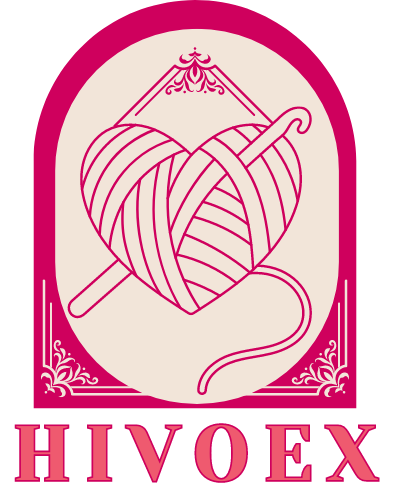Crochet is more than just a craft; it’s a blend of creativity, tradition, and relaxation. This versatile art form, which involves creating fabric from yarn or thread using a single hook, has captivated generations of crafters. From simple scarves to intricate lacework, crochet offers endless possibilities.
A Brief History
Crochet’s roots trace back to the 19th century in Europe, where it became popular among the upper classes. Its name, derived from the French word for “hook,” reflects its fundamental tool. Over the years, crochet evolved from a luxury pastime to a widespread hobby, with intricate patterns and techniques passed down through generations.
Essential Materials and Tools
Starting with crochet requires minimal tools:
Yarn or Thread: Available in various weights and fibers like cotton, wool, and acrylic, each offering unique textures and uses.
Crochet Hooks: These come in different sizes, usually indicated by numbers or letters, and are made from materials like aluminum, plastic, and bamboo.
Scissors: Essential for cutting yarn.
Tapestry Needle: Used for weaving in loose ends and sewing pieces together.
Basic Stitches
Mastering a few basic stitches is the foundation of all crochet projects:
Chain Stitch (ch): The starting point for most patterns.
Single Crochet (sc): A tight, dense stitch ideal for amigurumi.
Double Crochet (dc): Creates a taller, more open fabric.
Slip Stitch (sl st): Joins stitches or moves the yarn without adding height.
Popular Projects
Crochet projects vary from beginner to advanced:
Scarves and Blankets: Ideal for beginners, these projects help practice basic stitches.
Hats and Mittens: Introduce shaping techniques.
Amigurumi: The Japanese art of crocheting small stuffed toys, popular for its charming creations.
Lacework: Uses fine threads to create delicate and intricate designs.
Benefits of Crochet
Relaxation: The repetitive motions of crocheting can be meditative, reducing stress and anxiety.
Creativity: Offers endless possibilities for personal expression through colors, patterns, and textures.
Practicality: Handmade items make thoughtful gifts and practical additions to your home.
Portability: Easy to carry, making it a perfect on-the-go hobby.
Modern Crochet
Today’s crochet world has expanded thanks to technology and social media. Platforms like Instagram and Pinterest are brimming with inspiration, patterns, and tutorials. Online communities provide a space for crafters to share their work and learn from each other.
Getting Started
New to crochet? Here are some tips to begin:
Learn the Basics: Utilize online tutorials, books, or local classes to master fundamental stitches.
Start Simple: Begin with easy projects like dishcloths or scarves.
Gather Supplies: Invest in quality yarn and hooks to make the process enjoyable.
Advanced Techniques
Once you’ve mastered the basics, explore advanced techniques:
Colorwork: Combining different yarn colors to create patterns.
Tunisian Crochet: A blend of knitting and crochet techniques.
Broomstick Lace: Uses a broomstick handle or large knitting needle to create lacy designs.

Sustainability and Crochet
Crochet is also an eco-friendly craft. Many crafters use recycled materials or repurpose old garments into new creations. This not only reduces waste but also gives items a new lease on life.
Conclusion
Crochet is a timeless craft that blends creativity, tradition, and functionality. Whether you are looking to create beautiful home decor, stylish accessories, or meaningful gifts, crochet offers a fulfilling and versatile outlet for your creativity. As you dive into the world of crochet, you’ll find a supportive community, endless inspiration, and the satisfaction of making something with your own hands.
Embrace the art of crochet and discover the joy it can bring to your life. From the simple pleasure of working with yarn to the pride of completing a project, crochet is a craft that can provide both relaxation and a sense of accomplishment. So, pick up your hook and yarn, and start creating today.

